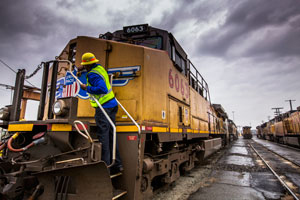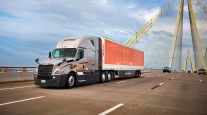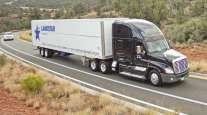West Coast Port Gridlock Hampers Union Pacific Earnings

Union Pacific Corp., the largest U.S. railroad, posted first-quarter profit and sales below estimates as West Coast port congestion and slack coal demand caused carloads to decline.
Union Pacific’s net income rose to $1.15 billion. Revenue per carload increased 1.3%, while shipments fell 1.9%, the railroad said in a statement April 23.
“It’s no secret that they were impacted by the West Coast port issues,” Justin Long, an analyst with Stephens Inc., said in a phone interview before the report. “They also saw weakness in other areas of the business.”
Sales of $5.61 billion were below analyst expectations of $5.72 billion. Earnings of $1.30 a share missed the $1.37 average of 26 analyst estimates compiled by Bloomberg News.
Union Pacific and BNSF Railway Co., suffered from congestion at U.S. West Coast ports as cargo movements slowed during tense labor talks with the dockworkers’ union.
Many Asian shippers used Canadian ports at Vancouver and Prince Rupert or the Panama Canal to East Coast ports.
While an agreement was reached in late February, the ports still are working through a backlog of ships. Intermodal containers, which can be handled by ship, rail and truck, accounted for a fifth of Union Pacific’s traffic last year.
Cargo fell industrywide during the first quarter as utilities burned more lower-priced natural gas instead of coal, and a drop in oil production reduced the amount of crude hauled by rail, according to the Association of American Railroads.
The company was able to increase prices as a truck driver shortage has limited cargo capacity, giving the rails more leverage with shippers.
“The pricing environment is getting better, and that’s definitely the highlight for the industry right now,” Long said. “There’s still a lot of hesitancy on Union Pacific and the rails in general given the demand environment.”




